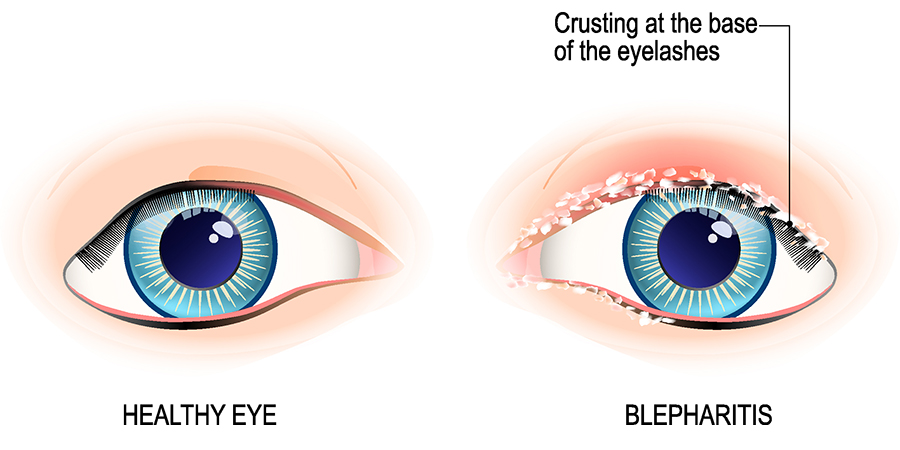Overview
Blepharitis is inflammation of the eyelids—typically along the lash line. It’s common, can be chronic or intermittent, and isn’t contagious. People with oily skin or skin conditions (like dandruff or rosacea) are more likely to develop it. Symptoms often flare and settle over time.
Symptoms & Types
Red, swollen, itchy eyelids; burning or stinging
Crusting or flaking on lashes; “gritty” or dry-eye feeling; light sensitivity
Watery eyes, foamy tears, or eyelash changes
Anterior Blepharitis
Inflammation at the outer lid margin and lash line—often linked with bacteria or scalp/skin dandruff.

Posterior Blepharitis
Related to Meibomian (oil) gland dysfunction along the inner lid edge; oil quality/flow issues worsen eye surface irritation.

Causes & Risk Factors
Bacterial overgrowth on the lids/lashes
Skin conditions (dandruff/seborrheic dermatitis, rosacea)
Meibomian gland dysfunction (MGD)
Allergies or mites along the lash line
Blepharitis can be associated with dry eye and other eyelid/ocular surface issues.
Diagnosis
Your eye care provider examines the eyelids, lash line, and eye surface. They’ll look for crusts, blocked oil glands, and signs of inflammation; occasionally, they may collect a sample to rule out infection.
Treatment
- Warm compresses to soften oils/crusts
- Eyelid hygiene: gentle lid scrubs/lash cleaning
- Artificial tears for irritation/dryness
- Topical antibiotics/antibiotic–steroid combos for flares
- Medications for MGD or associated skin conditions
Blepharitis tends to be long-term; regular maintenance usually keeps symptoms controlled.
Home Care & Prevention
Daily lid hygiene during flares (then a few times weekly for maintenance)
Replace eye makeup regularly; remove makeup every night
Manage dandruff/rosacea; take screen breaks to support blinking/tear film
When to Call a Doctor
Seek care if symptoms persist or worsen, vision changes occur, pain increases, or you develop a painful bump (stye/chalazion).
FAQ
Is blepharitis contagious?
No—while bacteria can be involved, the condition itself isn’t considered contagious.
Will it go away?
It often comes and goes. Consistent lid hygiene and treating related conditions help keep it controlled.
Can it cause dry eye?
Yes—oil gland dysfunction and inflammation can destabilize the tear film and worsen dry eye symptoms.